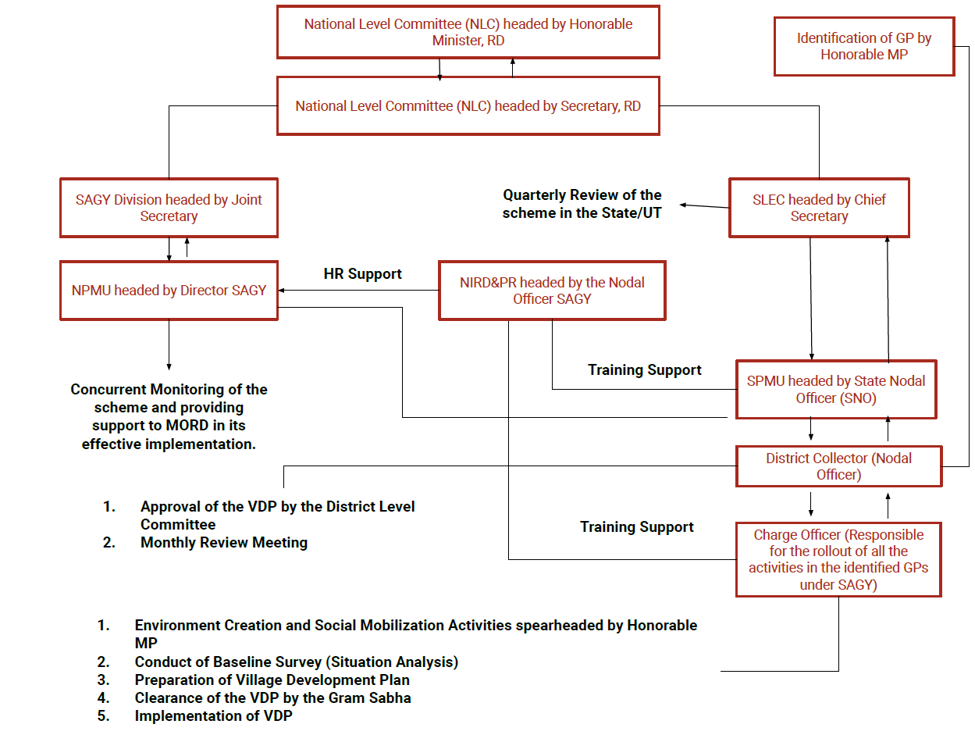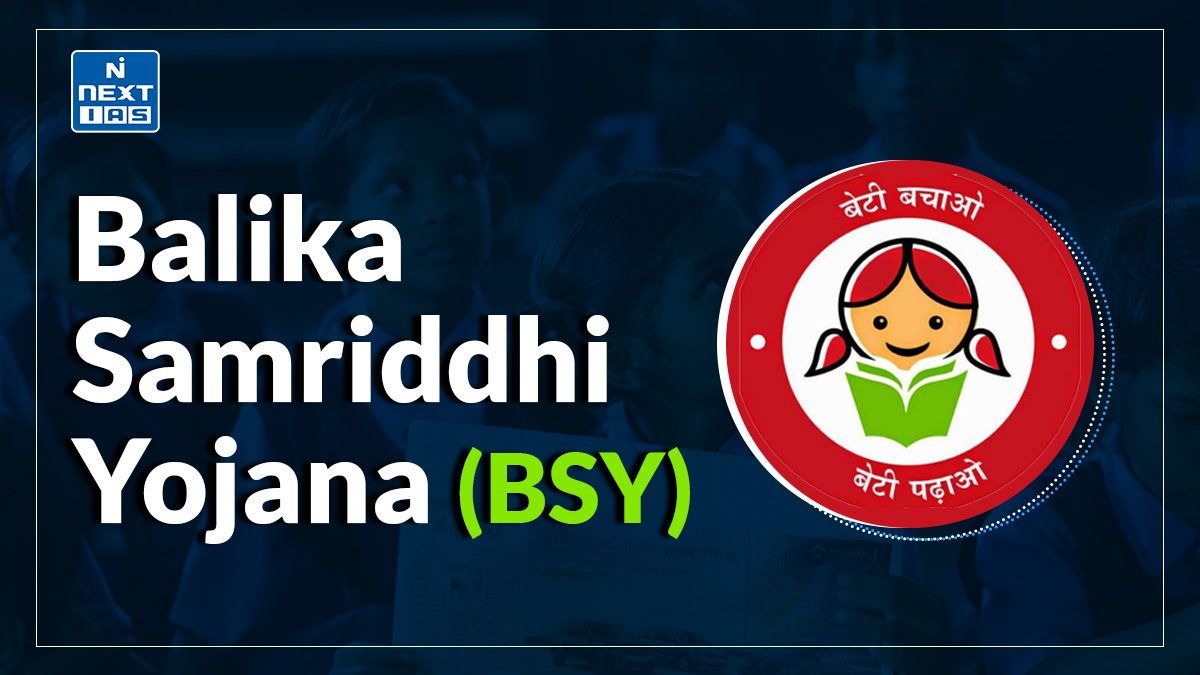
Sansad Adarsh Gram Yojana (SAGY) launched on 11th October, 2014 on the birth anniversary of Lok Nayak Jai Prakash Narayan at Vigyan Bhawan, New Delhi. The goal was to develop three Adarsh Grams by March 2019, of which one was to be achieved by 2016. Thereafter, five such Adarsh Grams (one per year) will be selected and developed by 2024. Inspired by the principles and values of Mahatma Gandhi, the Scheme places equal stress on nurturing values of national pride, patriotism, community spirit, self-confidence and on developing infrastructure. SAGY will keep the soul of rural India alive while providing its people with quality access to basic amenities and opportunities to enable them to shape their own destiny.
About the Sansad Adarsh Gram Yojana
- Sansad Adarsh Gram Yojana (SAGY) was launched on October 11, 2014, by the Government of India to develop model villages through Members of Parliament (MPs).
- The scheme focuses on holistic rural development, including better infrastructure, education, healthcare, sanitation, and livelihood opportunities. Each MP adopts a village and ensures its integrated development through public participation and convergence of existing government schemes.
- The initiative aims to promote sustainability, self-reliance, and inclusive growth in rural areas.
- However, challenges like funding limitations and implementation hurdles persist.
- Despite these, SAGY has encouraged grassroots development and participatory governance, enhancing rural living standards.
Features of Sansad Adarsh Gram Yojana
- Village Adoption by MPs: Each MP must adopt one village (population of 3,000–5,000 in plains and 1,000–3,000 in hilly areas) and develop it as a model village by 2016, followed by two more by 2019.
- Holistic Development Approach: Focuses on social, cultural, economic, and infrastructural development rather than just economic growth.
- No Separate Fund Allocation: SAGY does not have a dedicated budget; MPs must converge existing schemes like MGNREGA, PMGSY, PMAY, etc.
- Community Participation: Encourages people’s participation, self-help groups, and local governance to ensure sustainable development.
- Smart Village Development: Emphasizes education, health, sanitation, skill development, digitization, and women empowerment.
- Replication Model: A successful Adarsh Gram should serve as a model for neighboring villages to adopt similar development practices.
- Monitoring & Evaluation: Regular progress tracking through the District Collector and reporting to the Ministry of Rural Development.
Objectives of the Sansad Adarsh Gram Yojana
The main objectives of SAGY are:
- To trigger processes which lead to holistic development of the identifed Gram Panchayats
- To substantally improve the standard of living and quality of life of all sections of the populaton through
- Improved basic amenites
- Higher productvity
- Enhanced human development
- Better livelihood opportunites
- Reduced disparites
- Access to rights and entitlements
- Wider social mobilizaton
- Enriched social capital
Outcomes of the Sansad Adarsh Gram Yojana
Most of the outcomes related to investments and schemes are detailed in Annexe II. In additon, SAGY is expected to have other significant outcomes which would include:
- Increased livelihoods/employment opportunites
- Reduction in distress migraton
- Freedom from bonded labour, child labour and manual scavenging
- 100% registraton of deaths and births
- Evolution of alternate dispute resolution system acceptable to all sections of the community
- Peace and Harmony
- Demonstration effect on other Gram Panchayats
Institutional Framework of the Sansad Adarsh Gram Yojana

Significance of Sansad Adarsh Gram Yojana
- Launched on October 11, 2014, Sansad Adarsh Gram Yojana is a unique initiative aimed at holistic rural development by leveraging the leadership of Members of Parliament (MPs).
- Unlike other schemes that focus primarily on infrastructure, SAGY adopts a people-centric approach, emphasizing social, economic, and cultural transformation of villages.
- Each MP selects a village and works towards comprehensive development by improving education, healthcare, sanitation, skill development, e-governance, and sustainable livelihoods.
- The scheme integrates converging existing government programs with community participation, ensuring optimal resource utilization.
- SAGY plays a crucial role in rural empowerment, as it fosters self-sufficiency, participatory governance, and grassroots development. It also encourages model villages, inspiring replication in other areas.
- The initiative enhances MPs’ engagement with rural development, strengthening democratic values at the local level.
- Despite challenges like funding constraints and implementation gaps, SAGY remains significant for sustainable rural progress, bridging the rural-urban divide, and aligning with India’s inclusive growth vision under schemes like Digital India and Atmanirbhar Bharat.
Lacunae of the Sansad Adarsh Gram Yojana
- Lack of Dedicated Funding: SAGY does not have a separate budgetary allocation. It relies on existing schemes and MPLAD (Member of Parliament Local Area Development) funds, limiting its financial effectiveness.
- Low Participation from MPs: Many Members of Parliament (MPs) have shown limited interest in adopting villages due to political constraints, lack of incentives, or administrative hurdles. This has resulted in sluggish implementation.
- Inconsistent Implementation: The scheme’s success largely depends on the MP’s active involvement, leading to inconsistencies. Some villages progress well, while others see little to no development.
- Coordination Challenges: Effective implementation requires coordination between multiple government departments, local authorities, and MPs. However, bureaucratic delays and lack of synchronization often hinder progress.
- Limited Community Participation: While the scheme promotes community-driven development, local engagement is often minimal due to a lack of awareness, grassroots leadership, and capacity-building initiatives.
- Sustainability Issues: Many villages witness improvements only during the MP’s tenure. Once political focus shifts, maintenance and sustainability of developments become challenging.
- Monitoring and Evaluation Gaps: The absence of a robust monitoring framework makes it difficult to assess the scheme’s actual impact and take corrective measures.
Key Pointers on Sansad Adarsh Gram Yojana (SAGY) for UPSC CSE Prelims
- Launched: October 11, 2014, by the Government of India.
- Objective: Holistic development of villages into model villages (Adarsh Grams).
- Nodal Ministry: Ministry of Rural Development.
- Implementation: Each MP adopts a village to develop it socially, economically, and infrastructurally.
- Target: Each MP to develop at least three villages by 2019 and more over time.
- Approach: Focus on participatory development and people’s participation (Jan Bhagidari).
- Key Focus Areas: Education, health, sanitation, skill development, women empowerment, and rural infrastructure.
- No Separate Funding: MPs use existing schemes like MPLAD, CSR, and state funds.
Way Forward
To enhance SAGY’s impact, stronger MP involvement, dedicated funding, and better convergence of schemes are needed. Encouraging community participation, leveraging technology, and ensuring regular monitoring can drive sustainable rural development. Strengthening governance and scalability will help transform more villages into self-reliant and model rural hubs.
Conclusion
Sansad Adarsh Gram Yojana is a visionary initiative for holistic rural development through MPs’ leadership. Despite challenges like funding and implementation, its success depends on active participation and convergence of schemes. If effectively executed, SAGY can serve as a model for inclusive and sustainable village development in India.






